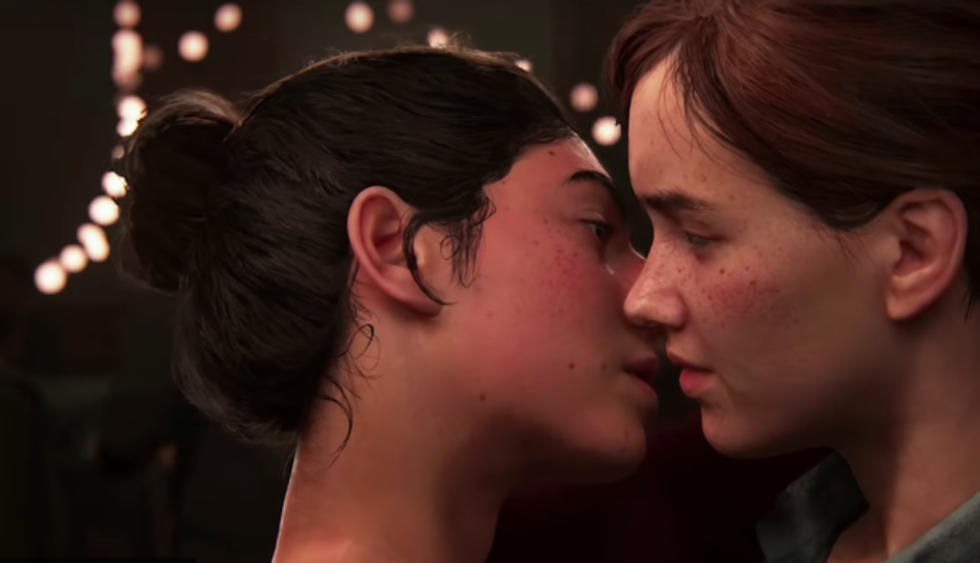At E3, Sony premiered "The Last of Us 2", which starred a lesbian couple dancing and kissing. Last month, the Marvel blockbuster Deadpool 2 featured a young gay couple as well. Slowly but surely it seems, we're making steps towards the inclusion of LGBT people.
Now, it seems there are many canonical lesbian relationships in the media, revolutionary breaking genre they exist in (gay relationships usually take place in dramas, not the action and adventure genre) and dividing its audiences. Examples over the past few years are Tracer and Emily in" Overwatch," Lexa and Clarke in "The 100," Korra and Asami in "The Legend of Korra," and Marceline and "Princess Bubblegum."
But where are the gay men? Last year, Disney toted La Foe as its first LGBT character, but it's easy to miss you have a keen eye and reject if you're homophobic. This year, Love Simon was released, featuring a young male couple and exposing to the world how being in the closet affects your perception of your close relationships. But this is a genre aimed at gay teens and young women. Perhaps I don't consume enough media, but this is the only gay couple I can think of in the recent years that wasn't in something tragic and rated-R.
Where are the gay men in fantasy and action? Is seeing men kiss inherently more repulsive than watching women kiss? After the release of "Harry Potter & The Deathly Hollows," JK Rowling stunned us all by touting Dumbledore's homosexuality with pride, but some were critical. How easy would it have been for JK Rowling to include that in the book? Rita Skeeter did an entire exposé about Dumbledore's life in the last book. JK Rowling had time over the past ten years to hear the concerns of the community, but directors have said in "Fantastic Beasts & Where To Find Them", for which JK Rowling has an Executive Producer credit, that Dumbledore will not be explicitly gay. Even though JK Rowling said he was in love with the main antagonist after Death Hollows.
The answer is painfully obvious. Lesbian couples are more consumable because they can easily be sexualized by the male target audience, and men can not. This carries disturbing implications about the objection of women and gay people, and how the media seeks to uphold its male audience. What would happen if the toxic gamers who drive women out of online play by threatening to rape them (which happens so, so, so often) were forced to watch two men kiss? What if their favorite Overwatch character was gay?
Objectification is the double-edged sword of increased visibility and tolerance for gay people. How many homophobic men would become violent if a man kissed them, but secretly watches lesbian porn at night? How many men have you heard admit to this with pride? In turn, how many straight women have you heard moan about not having a gay best friend? On this exact note, while there may not be any male relationships in TV, comedic reality shows with gay cast members, like "Queer Eye" and "RuPaul's Drag Race" rule the internet because they are consumed by straight people with ardor.
The marketability of lesbian relationships has another facet. It's no secret women are more intimate with their friends than men, so many times obvious signs of a romantic relationship are dismissed. In the first The Last of Us, there were obvious hints of the main female character, Ellie, being gay. The most obvious being a picture of her kissing her best friend on the lips. These "gal pal" googles diminish all the hints of representation gay women get.
There's no lack of chemistry between male characters entire. The desire for gay, male relationships fuels the most fanatic fandoms. While I don't condone the fanatic behavior, heterosexual relationships with support from most of the fans become canon within the next season or two. Always. What are we do make of this hesitance?
I'm not trying to imply that there should be fewer lesbians, but this issue demands our awareness.






















